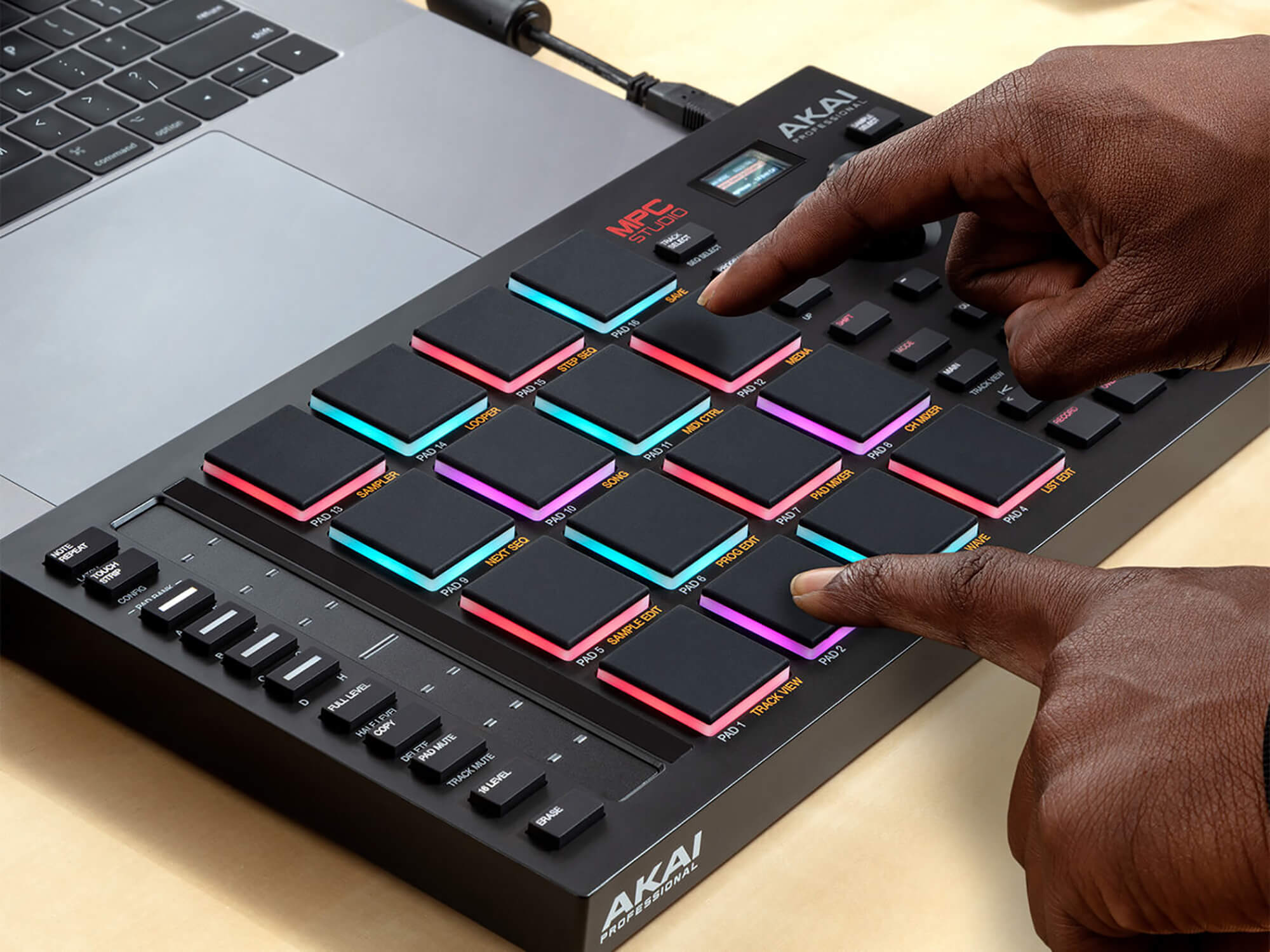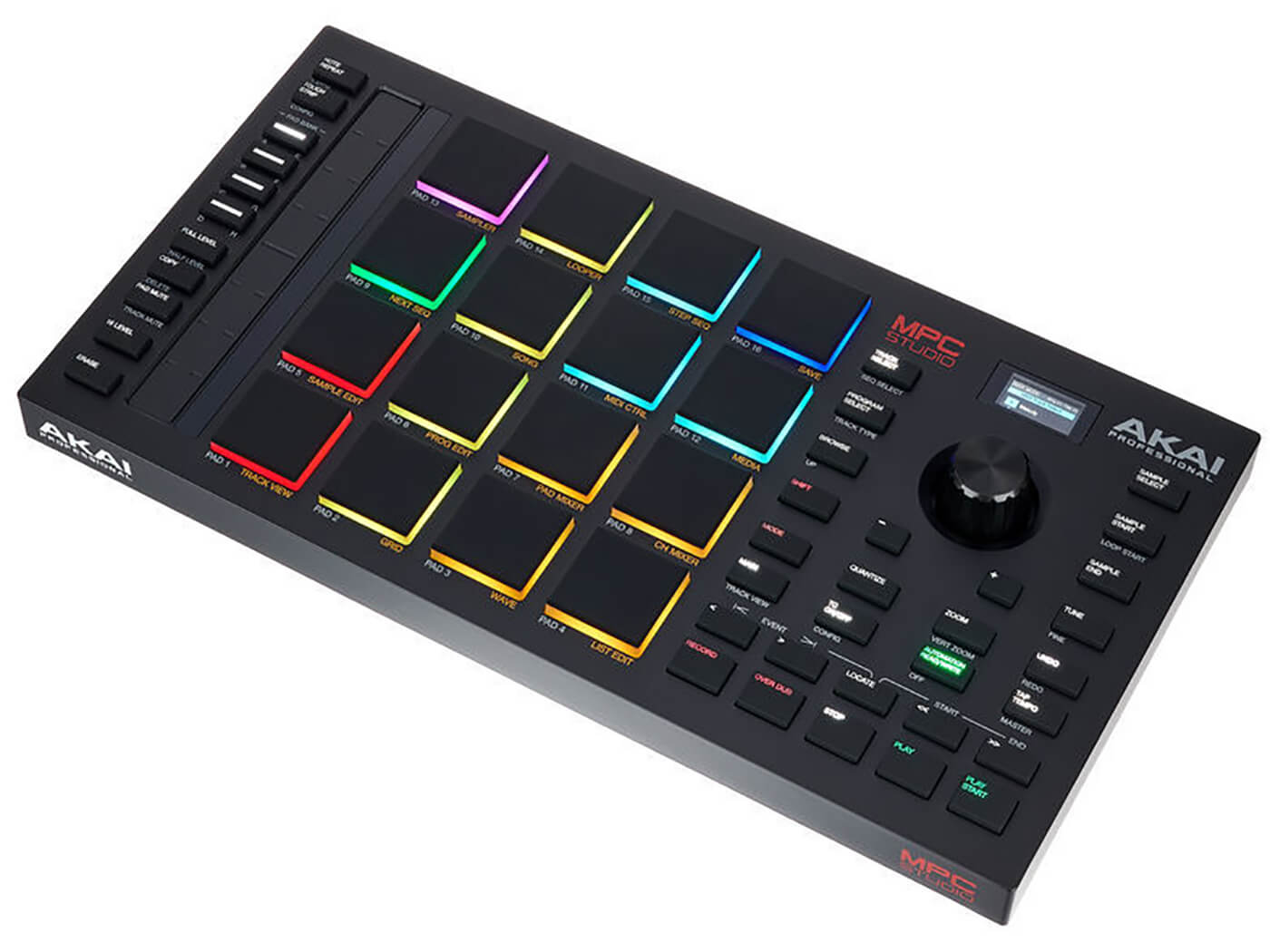Akai MPC Studio review: The legend returns
Beats on the go and beats on a budget – the new Akai Professional MPC entry-level controller gets a revamp with some interesting updates to both hardware and software.

Review Overview
Our rating
8
Our verdict
⊕ Sturdy and compact controller with great pads and additional MIDI Ports
⊕ Touch strip and OLED screen are a welcome update to the MPC Studio controller
⊖ User experience for software authorisation for new users is a bit clunky
⊖ MPC software does have quite a learning curve if you are not familiar with MPC workflow.
⊖ Hardware layout of the MPC Studio does not translate well with the interfaces of the other MPC series.
The Akai MPC has dominated and defined pad-based groovebox music for decades. It all started in 1988 with the MPC60, made famous by many hip-hop, electronic music and pop producers. With an exuberant 26.2 seconds of sample time and 12-bit sampling quality, the MPC60 paved the way for funky grooves and simplified MIDI sequencing in the studio or on stage. Later MPC successors brought more sample time and higher fidelity, while only slightly updating the form factor and sequencing functionality. Whichever MPC you choose, you can always rely on solid beatmaking and sequencing hardware.
Fast-forward to 2021, and the MPC’s workflow and hardware have yet again been refined and redefined into a new entry-level controller and software package.
What you see is what you get
The MPC Studio has a very compact, yet sturdy imprint. It still has the solid durable feel shared by all MPC hardware, and yet is considerably smaller than the previous-generation MPC Studio. Measuring only 305 x 171 x 37 mm, it sits tidily on any desk without taking up too much space. Included in the box are a USB cable, two MIDI breakout cables and instructions on how to get started.
When compared to its predecessor, the MPC Studio’s screen has undergone a massive reduction. However, the crispness of the OLED screen is great despite being very small in size. It is difficult to say if this is a disadvantage as the MPC Studio can be permanently connected to a computer and you can utilise its software interface instead. Personally, we don’t think it is a drawback and it still gives you some feeling of standalone music production.
If you are coming from the free MPC Beats software or from another way of beatmaking entirely, this is a great way to get into the MPC ecosystem. The dedicated buttons make for an engaging way to interact with the software.
There are 39 buttons on the controller which make for quick selection and mode changing. The full-size pads are a lot of fun to play with, and also provide shortcuts to various modes. The pad sensitivity is adequate and also fully adjustable in the software.
The chunky sized jog wheel – another classic MPC signature design – also makes a good impression, and is often a more useful alternative to using a mouse to make adjustments. Akai Professional have provided a decent amount of samples and plugins to make a lot of music before reaching for third party plugins or samples. It is well worth exploring the dedicated sample expansion pack and plugin presets regardless of your production skill level.

Touch strip production hacks
One of the most useful features of the controller is the assignable touchpad on the left of the controller. Measuring the height of four MPC pads, it just begs to be used for sound tweaking and effect manipulation. Use it to add creative spice to anything, from beat repeat time divisions, parameter automation, pad velocity, filter cutoff frequency, and even playing notes.
Once you discover its full potential, it really is a Swiss army knife-style control that can really speed up your workflow.
Step-by-step guidance
Like its predecessors, the MPC Studio comes alive when sampling audio sources, and the sequencer workflow is strongly orientated to sample based production. Samples are loaded onto pads and can also be chopped into segments quickly for instant use. For those who are familiar with this workflow, it is like meeting an old friend. Within a few clicks, you will be chopping, finger drumming and sequencing to your heart’s content.
For those coming from other DAWs or just starting, the MPC software can seem a little cryptic. The workflow is by no means difficult, but it is different and limiting in some ways. The limitation of the sample engine is not a disadvantage, but rather a challenge for a user to maximise their creativity.
Fortunately, Akai has foreseen the need for new users to understand the MPC workflow and has provided a detailed video tutorial and a song to follow along so that you can learn the ropes and get familiar with both hardware and software. The one-hour video walkthrough should help any level of user to get started and is a very welcome addition to those making the transition to MPC.
Conclusion
The MPC Studio has affordable and fun written all over it. With new features like the touch strip, MIDI I/O for external hardware and dedicated buttons to make working with the software a breeze, what more could you ask for?
Well, maybe standalone operation without the need for software. But with most beat makers working comfortably with software nowadays, this might be an unnecessary luxury. For more seasoned MPC users, this controller can be thrown into your travel bag, along with your laptop and audio interface for beatmaking on the road.
The need for a computer and interface still has to be factored into a budget if you are getting started, so upgrading to a higher level MPC, such as the MPC One or MPC Touch, may be a worthy alternative depending on how much you would like to invest into the MPC ecosystem.
The MPC Studio package does, however, provide a lot of bang for the buck when it comes to quality of the hardware, the software package, the sample expansions and native plug-ins.
With a comprehensive online tutorial to get new users started, there is little in the way to start making beats and master the workflow that has been tried and tested as one of the most engaging ways to produce sample-based loops and grooves since 1988.
Key Features
- Sleek and compact updated entry-level MPC controller
- Simple layout makes it easy to learn MPC workflow
- Sturdy and sensitive MPC pads with adjustable settings
- MIDI in and out to sync external hardware
- New large touch strip for beat repeats and effects
- Small but functional OLED screen for browsing.
- Capable MPC software suite of instruments and effects
- €259